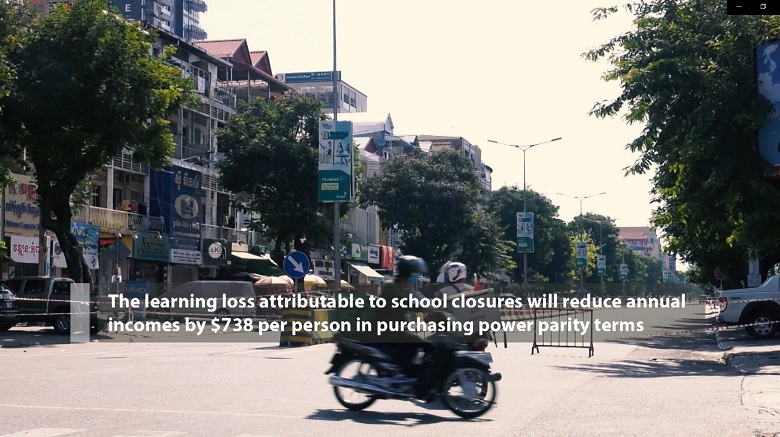Key Findings
- Cambodia is now living with COVID-19. Since November 2021, the authorities have relaxed travel restrictions, “reopening” the country for business, while continuing to strictly enforce protective health measures.
- Real gross domestic product (GDP) is projected to grow 2.2 percent this year due to a resurgence of COVID-19 cases, which slowed the recovery, especially of the tourism, wholesale, and retail sectors during the second and third quarters of 2021.
- Traditional growth drivers, especially the garment, travel goods, footwear, and bicycle manufacturing industries, as well as agriculture, continue to underpin the economic recovery.
- The electrical, electronic, and vehicle parts manufacturing industries are gradually emerging, while the agroprocessing industries, in particular food and wood processing, and furniture are also picking up.
- Despite a recovery of manufacturing exports and an expansion of agricultural commodity exports, the trade deficit has widened significantly.
- Financial conditions continued to be accommodative, supported by a relaxation of monetary policy.
- As of October 2021, 678,459 households or 19 percent of all households, have received the cash transfer from the government.
- Poverty continues to remain higher than pre-pandemic, given that employment has yet to return to pre-pandemic levels and the negative impacts of the pandemic on non-farm family businesses remain substantial, caused mainly by weak consumer demand.
- The economy is expected to continue to recover amid a rollback of COVID-19-related restrictions. Real GDP growth is projected to reach 4.5 percent in 2022.
- Risks remain tilted to the downside. The coronavirus continues to be unpredictable. A slowdown in global demand could hurt export-oriented sectors of the economy, while the tourism sector may recover even more slowly than expected, as consumers may remain reluctant to travel far distances despite eased travel restrictions. In addition, high credit growth and concentration of domestic credit in the construction and real estate sector remain a key risk to Cambodia’s financial stability.
Policy options
To jump start economic recovery, Cambodia needs an enabling environment that will allow the drivers of growth to accelerate. Key reforms could include:
- clear rules and regulations on living with COVID-19 under the “new normal”.
- regulatory and fiscal measures that support revival in the tourism sector, and
- prompt introduction of regulations to implement the new investment law.
As the economic recovery takes shape, Cambodia can then start rebuilding its fiscal space.
And continue to monitor asset quality and improve confidence in the banking system.
